Western Australia has seen around almost three quarters of its midday summer electricity demands being met by solar and wind generation in five of the past seven days.
The renewable boost, likely the combination of solar’s improved seasonal generation during summer and new WA wind farms coming online in September, is for Professor Ray Wills proof energy systems don’t crumble the minute renewable generation grows.
“Over a period of five days the South-West Interconnected System (SWIS) in Western Australia had in excess of 40% renewables generation for extended periods, and over 70% over a number of hours, and the SWIS operated just fine – without outages or compromise to energy security,” Professor Wills, Managing Director of Future Smart Strategies, told pv magazine Australia.
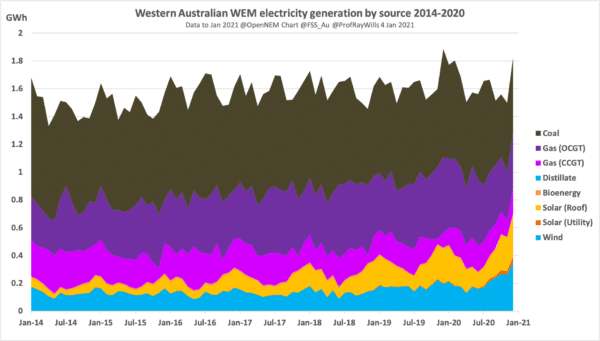
OpenNEM/Professor Ray Wills
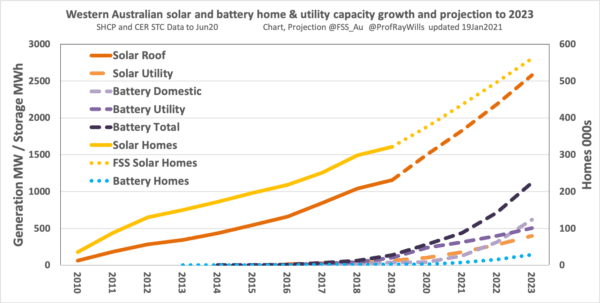
Professor Ray Wills
Western Australia is notably devoid of big batteries to date but is powering ahead in terms of solar installations and wind farms. As Daniel Kurz, Chief Operating Officer at Infinite Energy notes, December 2020 topped off another record month for WA with 35 MW of rooftop solar installed. “That caps off total installations for 2020 at 336 MW, up 40% from 2019,” Kurz told pv magazine Australia.
“This level of behind-the-meter generation combined with the commissioning of two large wind farms and large scale solar has significantly changed the landscape of generation in the South West Interconnected System,” Kurz added.
With 50% of WA households expected to have solar PV on their roofs by 2030, the state’s need to manage large swings in electricity loads means next critical piece of the renewable puzzle will clearly be batteries.
“Significant plans have been announced to bring both utility-scale battery storage to Western Australia as early as next year, and more significantly, a large amount of behind-the-meter storage, the combination of which will undoubtedly effectively address the legitimate concerns that will arise as renewables approach greater than (my number) 85% penetration,” Professor Wills said.
“Last decade was the decade of solar. This decade will be the decade of batteries – starting now.”
In October, the McGowan government announced plans for the first big battery which will connect to the state’s main grid, a 100 MW/200 MWh Battery Energy Storage System on the site of the decommissioned Kwinana power plant. Last year, the state also released its Distributed Energy Resources Roadmap, prioritising the trial and implementation innovative grid-stabilising strategies.
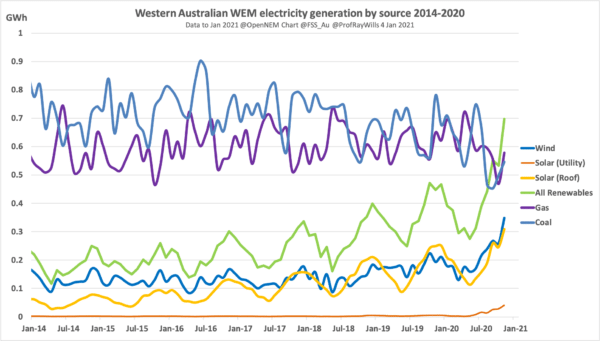
OpenNEM/Professor Ray Wills
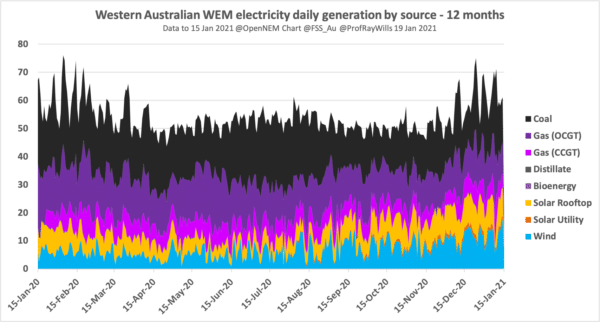
OpenNEM/Professor Ray Wills
Professor Ray Wills regularly tweets about Australia’s renewable transition. You can find him there @ProfRayWills.
This content is protected by copyright and may not be reused. If you want to cooperate with us and would like to reuse some of our content, please contact: editors@pv-magazine.com.
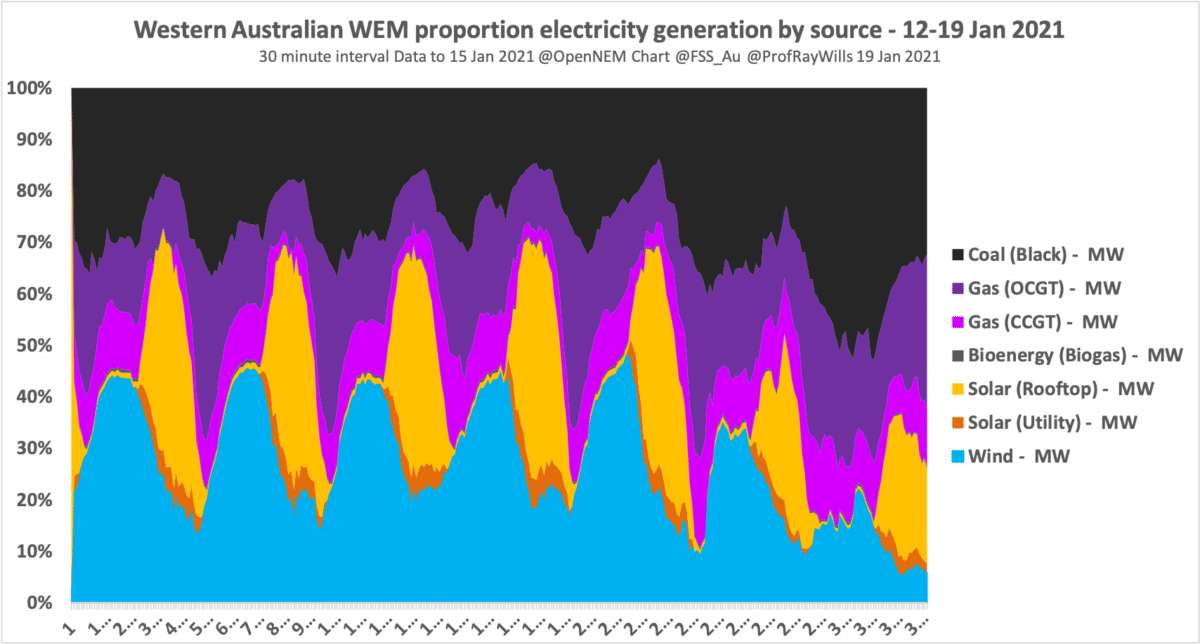
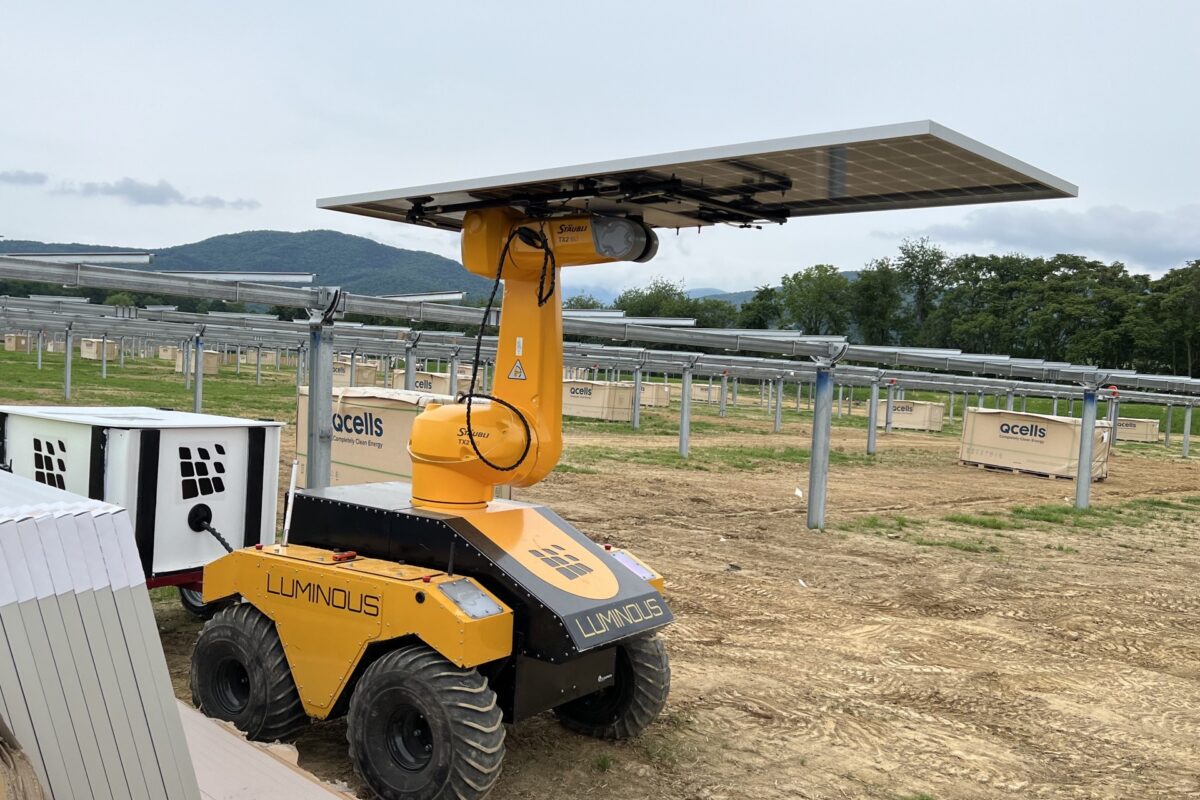







So the majority of WA’s last week occurred at midday?